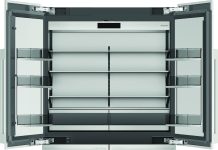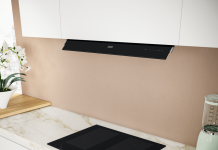 Within a year, the holographic smartphone could become a reality for consumers. The U.S. company Leia is working on this project. Founded in 2014 by David Fattal, Zhen Peng and Pierre Evreux, Leia is a technology spin-off from Hewlett-Packard laboratories developing a Lightfield display technology platform for naked-eye holographic and virtual reality applications. It focuses today on the mobile and automotive markets, with first devices expected in the hands of consumer by the end of 2017. The company is based in Menlo Park (California) with operations in Suzhou, China. “Our Holographic Reality platform – explains the company in its website – combines hardware innovation and special software to create a new medium on which to experience the virtual world with no need for any eye-wear, special gear or eye-tracking. Based on recent advances in Nanotechnology we are able to synthesize 3D holograms directly on a screen that also senses your fingers and lets you manipulate virtual objects as if they were real. In the near future we will also provide tactile feedback in mid-air to let you feel and touch virtual content outside of the screen!”. LEIA’s core technology is based on Diffractive Lighfield Backlighting, a proprietary rear illumination technique of a regular LCD display creating a precisely tuned lightfield behind the LCD frontplane. It results in naked-eye holographic imagery with content appearing to come out of the screen and changing aspect continuously with head movement like an object in the real world. The company also explains the application in mobile devices: “Our special dual backlight architecture retains an ultra-slim form factor and allows seamless switching between 3D holographic mode and regular 2D mode with retina quality. Our dynamic Field-of-View (d-FOV) feature allow developers to shift or reshape the physical 3D viewing zone at will to increase the parallax experience even further, or to insure viewing privacy… A powerful technique when used in conjunction with gyrometer of front camera input. Last but not least our Hover Touch function senses the user’s fingers above the screen and allows the manipulation of 3D content in mid-air using finger motion”.
Within a year, the holographic smartphone could become a reality for consumers. The U.S. company Leia is working on this project. Founded in 2014 by David Fattal, Zhen Peng and Pierre Evreux, Leia is a technology spin-off from Hewlett-Packard laboratories developing a Lightfield display technology platform for naked-eye holographic and virtual reality applications. It focuses today on the mobile and automotive markets, with first devices expected in the hands of consumer by the end of 2017. The company is based in Menlo Park (California) with operations in Suzhou, China. “Our Holographic Reality platform – explains the company in its website – combines hardware innovation and special software to create a new medium on which to experience the virtual world with no need for any eye-wear, special gear or eye-tracking. Based on recent advances in Nanotechnology we are able to synthesize 3D holograms directly on a screen that also senses your fingers and lets you manipulate virtual objects as if they were real. In the near future we will also provide tactile feedback in mid-air to let you feel and touch virtual content outside of the screen!”. LEIA’s core technology is based on Diffractive Lighfield Backlighting, a proprietary rear illumination technique of a regular LCD display creating a precisely tuned lightfield behind the LCD frontplane. It results in naked-eye holographic imagery with content appearing to come out of the screen and changing aspect continuously with head movement like an object in the real world. The company also explains the application in mobile devices: “Our special dual backlight architecture retains an ultra-slim form factor and allows seamless switching between 3D holographic mode and regular 2D mode with retina quality. Our dynamic Field-of-View (d-FOV) feature allow developers to shift or reshape the physical 3D viewing zone at will to increase the parallax experience even further, or to insure viewing privacy… A powerful technique when used in conjunction with gyrometer of front camera input. Last but not least our Hover Touch function senses the user’s fingers above the screen and allows the manipulation of 3D content in mid-air using finger motion”.




